
Callionima nomius, the fan-tailed bark moth, is a moth of the family Sphingidae. The species was first described by Francis Walker in 1856.

Xylophanes tersa, the tersa sphinx, is a moth of the family Sphingidae. The species was first described by Carl Linnaeus in 1771. It is found from the United States, through Mexico, the West Indies and Central America and into parts of South America. An occasional stray can be found as far north as Canada.
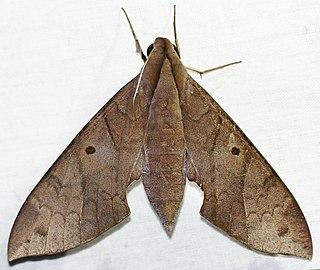
Pachylia darceta is a moth of the family Sphingidae first described by Herbert Druce in 1881.

Xylophanes ceratomioides is a moth of the family Sphingidae. It is known from Mexico, Belize, Costa Rica, French Guiana, Bolivia, Argentina and Venezuela, down into southern Brazil. Rare vagrants have been found up to southern Arizona.

Macroglossum fritzei is a moth of the family Sphingidae. It is known from south-eastern China, central and southern Japan, Thailand and Borneo.
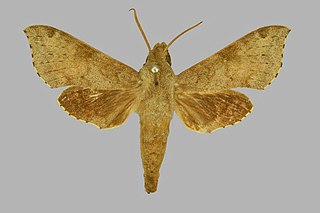
Temnora griseata is a moth of the family Sphingidae. It is known from forests from Nigeria to southern Congo, southern Tanzania and Malawi.

Callionima ramsdeni is a species of moth in the family Sphingidae which is known from Cuba. It was originally described by Benjamin Preston Clark in 1920.
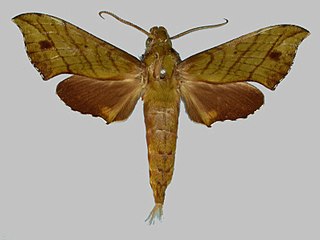
Xylophanes adalia is a moth of the family Sphingidae first described by Herbert Druce in 1881. It is known from Panama, Costa Rica north to south-eastern Belize and Mexico. In the south, it ranges as far as Ecuador.
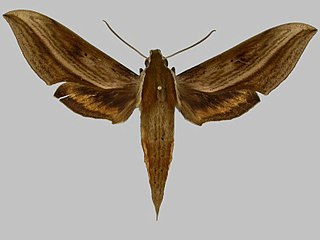
Xylophanes damocrita is a moth of the family Sphingidae first described by Herbert Druce in 1894. It is known from Mexico.
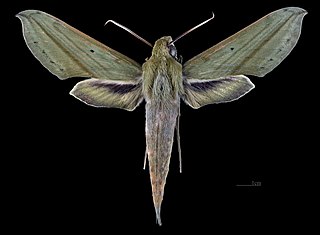
Xylophanes elara is a moth of the family Sphingidae first described by Herbert Druce in 1878. It is known from Paraguay, Suriname, Venezuela, Bolivia and Brazil.
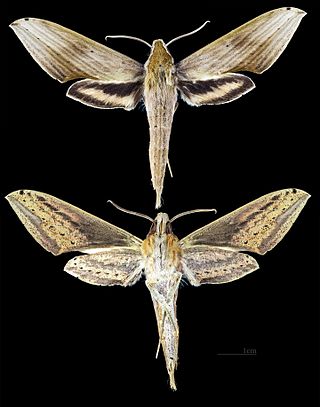
Xylophanes libya, the Libya sphinx, is a moth of the family Sphingidae. The species was first described by Herbert Druce in 1878. It is known from southern Texas, Mexico, Belize, Guatemala, Panama and from Venezuela south and west to Bolivia and Paraguay.

Xylophanes thyelia is a moth of the family Sphingidae. The species was first described by Carl Linnaeus in his 1758 10th edition of Systema Naturae.

Xylophanes titana is a moth of the family Sphingidae first described by Herbert Druce in 1878.
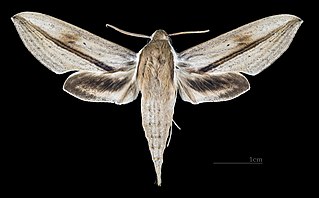
Xylophanes turbata is a moth of the family Sphingidae. It is known from Mexico to Nicaragua and Costa Rica. An occasional stray may be found up to southern Arizona.
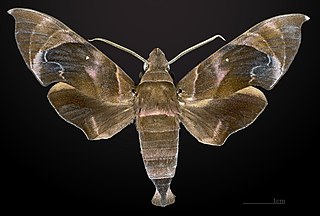
Eurypteryx bhaga, the hook-winged hawkmoth, is a moth of the family Sphingidae first described by Frederic Moore in 1866.

Pachygonidia caliginosa is a moth of the family Sphingidae first described by Jean Baptiste Boisduval in 1870.
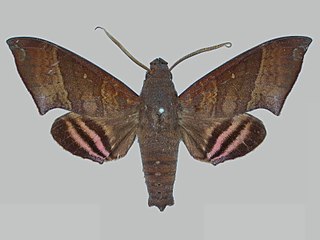
Pachygonidia drucei is a moth of the family Sphingidae. It is found from Panama and Costa Rica north to Guatemala, Belize and Mexico.

Pachygonidia subhamata is a moth of the family Sphingidae.
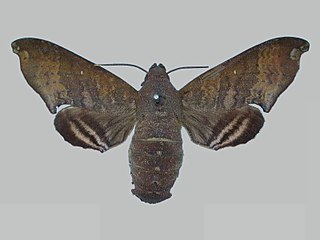
Pachygonidia mielkei is a moth of the family Sphingidae first described by Jean-Marie Cadiou in 1997. It is found in Brazil.
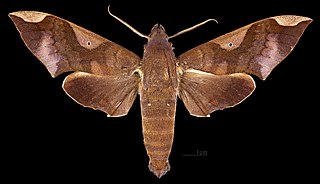
Pachylia syces is a moth of the family Sphingidae.




















